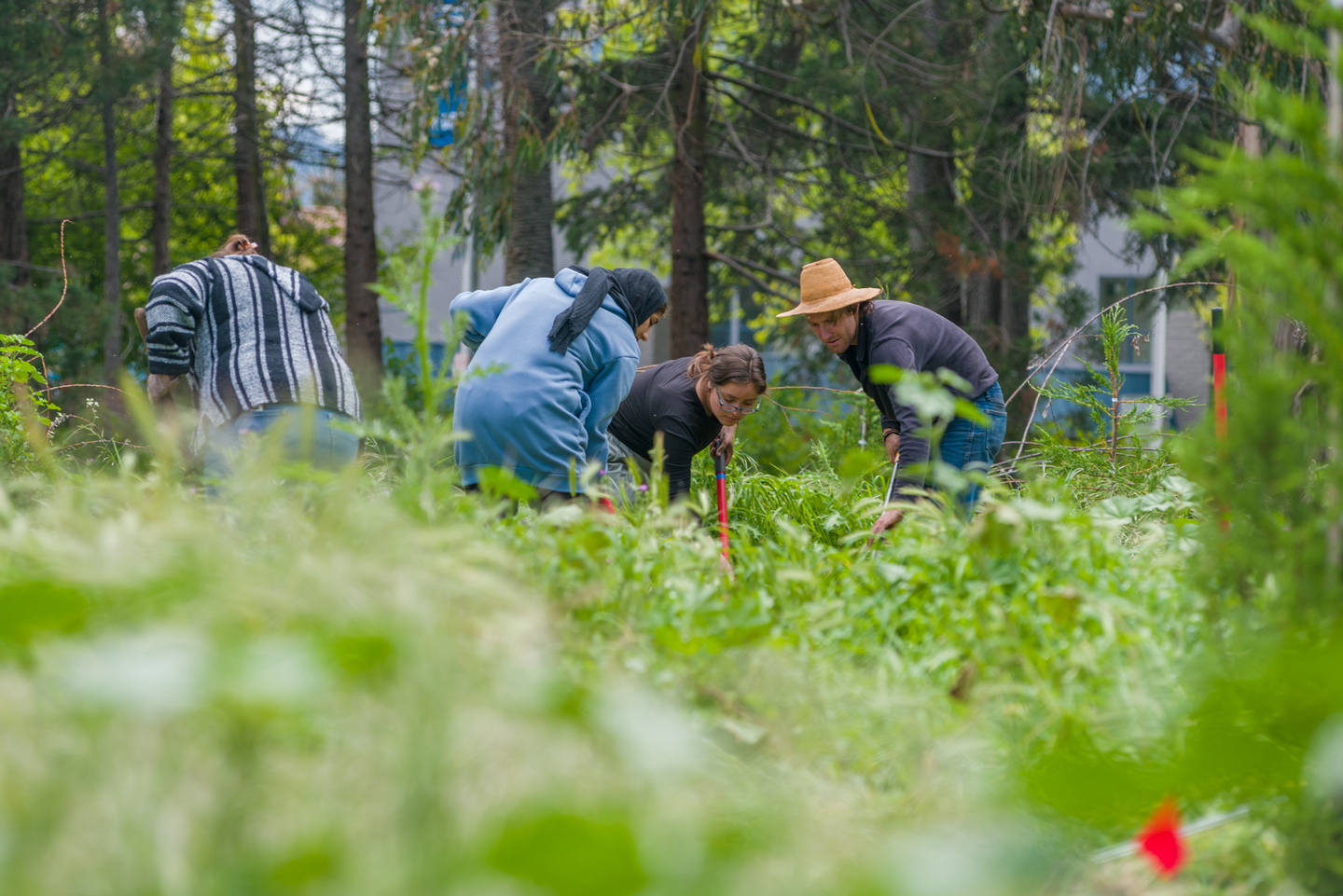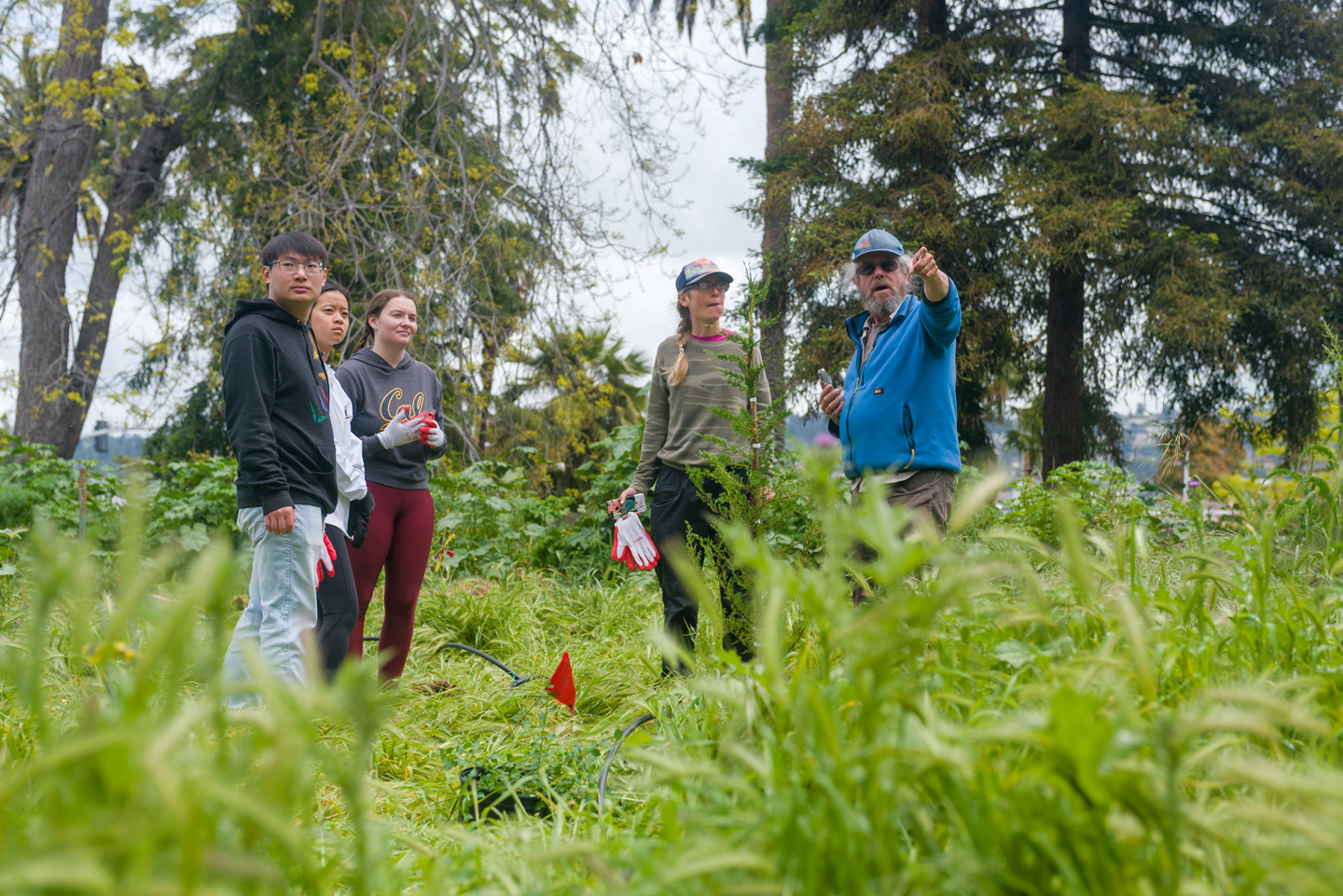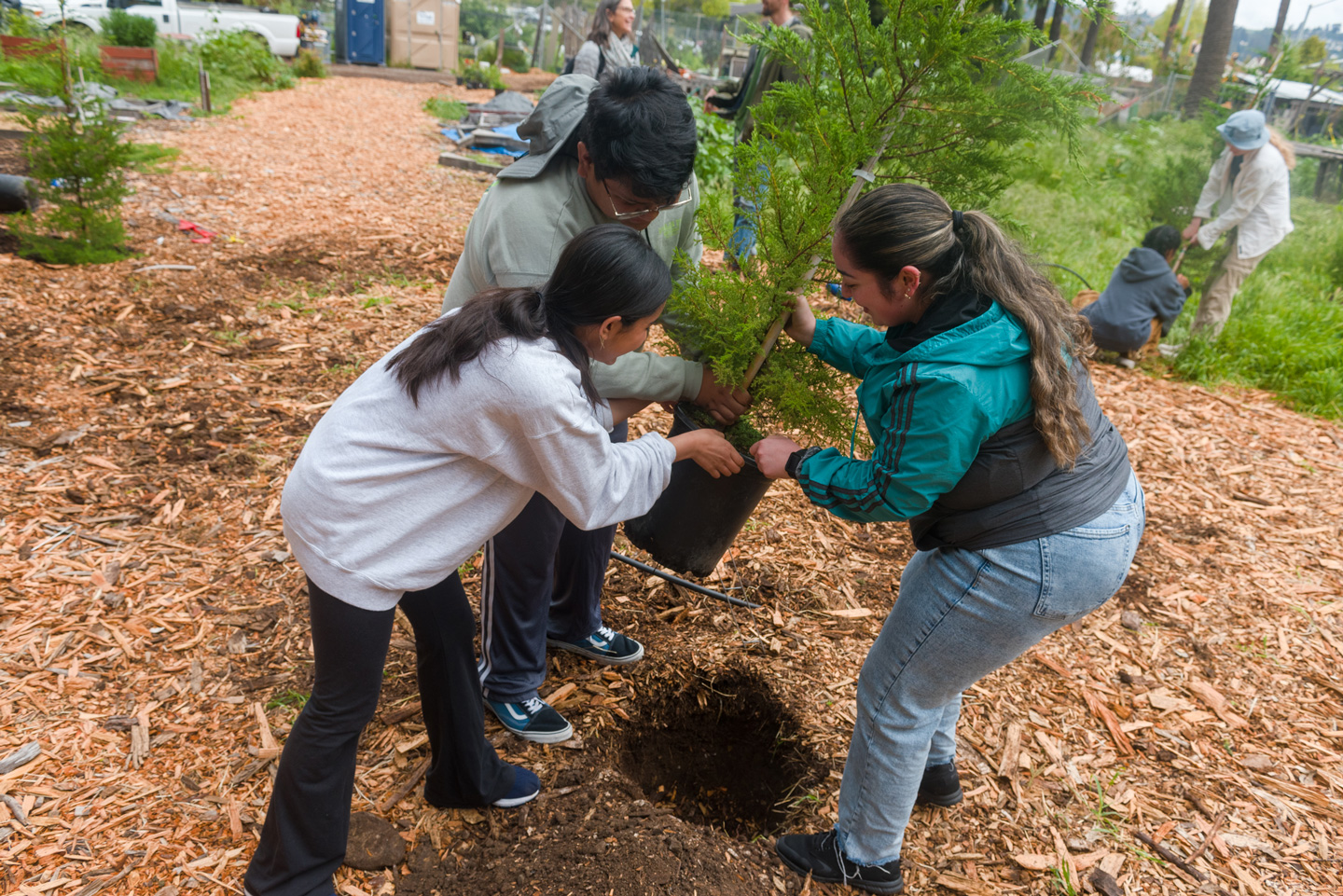
ESPM graduate student Cole Rainey (right), volunteers, and undergraduates in Kathryn DeMaster’s urban agroecology course clear grass to plant Monterey cypress and understory crops in the Gill Tract’s monarch butterfly grove.
For decades, the Gill Tract has been a living laboratory for student- and faculty-led plant and agricultural research at UC Berkeley. Since 2013, a portion of the land has supported a community-engaged urban agriculture project in partnership with the Gill Tract Farm Coalition, Sogorea Te' Land Trust, and Rausser College of Natural Resources.
But for far longer than that, the site has provided important habitat for migrating western monarch butterflies. Every fall, groups of butterflies start clustering in the leaves of the eucalyptus, cypress, and redwood trees on the Gill Tract. Drawn by the sunshine and shelter from the wind, the insects settle in to feed off the nectar-producing plants and wait out the winter.
“This place is a sanctuary and habitat for monarch butterflies,” said Cole Rainey, a graduate student in the Department of Environmental Science, Policy, and Management who conducts research at the Gill Tract. When spring arrives, the butterflies fly inland to breed and complete their migration.
The number of western monarchs that spend the winter in California has plummeted since the 1970s, when millions of butterflies could be found on trees across the state. The Xerces Society, a conservation group that conducts an annual count of monarchs every November, reports that the number of butterflies hovered in the low hundreds of thousands by the late 1990s and began to bottom out by 2018.
“Only 2,000 monarchs were counted at overwintering sites in California during 2020,” said Stu Weiss, chief scientist for the Creekside Center for Earth Observation. “Because of these greatly reduced numbers, the Gill Tract had the largest population of monarch butterflies in the East Bay that year.”
In early May, roughly two dozen students, UC Berkeley staff and faculty, and community volunteers gathered at the Gill Tract to plant trees and California native plants. The work culminates several years of planning and discussion focused on supporting California’s dwindling monarch butterfly population with improved habitat and new food sources.

From Right: Stu Weiss (Creekside Center for Earth Observation), Effie Rawlings (Gill Tract Community Farm), and undergraduates in Kathryn DeMaster’s urban agroecology course plan where to route irrigation hoses to support new trees planted on the Gill Tract.
Improving Monarch Habitat
Concerns about the future of monarch butterflies at the Gill Tract were amplified as construction of several nearby projects, including a 760-bed housing complex for UC Berkeley graduate students, began to progress. Community members and the Sogorea Te' Land Trust—an Indigenous women-led land trust that works to conserve and revitalize Lisjan Ohlone cultural practices, ancestral land, and cultural sites across Alameda County—were concerned that the project could negatively affect the availability of food and suitable habitat for the remaining butterflies.
Weiss, a monarch expert who has worked with cities across California, was contracted by the University to assess the project’s potential impact on the nearby habitat and recommend management and restoration actions to support the butterflies.
“The College is excited to help ameliorate the decline of monarch butterflies through this targeted planting of native trees at the Gill Tract,” said Dennis Baldocchi, executive associate dean and director of agriculture and natural resource programs at Rausser College. “This project helps us meet our goals of performing research, education, and outreach, and we are happy to bring together students, community members, farmers, and faculty together to help solve this problem.”
According to Weiss’ assessment, developing the graduate student housing would not block the sun’s rays from reaching the monarch habitat, even in December when it is lowest in the sky. The dormitory building will provide greater shelter from southwestern winds than previously existed, and new trees planted in the parking lots between the dormitory and the grove will further buffer the site. The assessment did, however, identify opportunities for improvement.
“People were really enthusiastic about the assessment and thrilled that we could resolve the student housing issue,” Weiss said of the report. “We had the buy-in from administrators who wanted to do something right for the monarch butterflies.”
LiDAR and hemispherical analysis of the site revealed significant exposure to northern winds, which Weiss said could be addressed by irrigating the drought-stressed redwoods and adding new trees to the grove.

Undergraduates enrolled in Kathryn DeMaster’s urban agroecology course prepare to transfer a Monterey cypress sapling from its container to the ground in the grove at the Gill Tract.
To prepare the site for Weiss’ prescribed landscape improvements, Facilities Services and Oxford Tract staff installed irrigation systems and dug holes in the ground to accommodate new Monterey cypress trees. Community volunteers, UC Berkeley student interns, and undergraduates in ESPM professor Kathryn DeMaster’s urban agroecology course spent the morning planting the saplings in the ground and routing irrigation lines to support their growth.
Two types of California native shrubs—Ceanothus and Toyon—were planted throughout the Gill Tract to create additional habitat for pollinator species as the trees start to grow. The monarch study and plan will also inform future land use and tree management decisions needed to balance habitat preservation with human uses.
Rainey is optimistic that the land management and habitat restoration efforts will benefit successive generations of migratory monarchs.
“Monarchs are a symbol of ancestors in many cultures, so in a way, monarchs returning to the Gill Tract is a sign that we are doing something right,” he said. “We’re trying to honor the ancestors of this place—and our own ancestors—through this work.”
